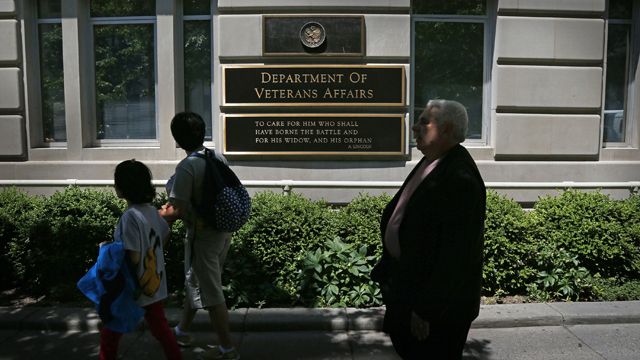
Matthew Hoh, a former Marine Corps company commander in Anbar Province who later redeployed to Afghanistan with the State Department and resigned his post in protest over U.S. policy, believes that nothing has laid bare the priorities of our nation so clearly as the sequester.
“The most vulnerable are getting hurt, while the privileged, the well-to-do are being protected,” says Hoh, now a senior fellow at the Center for International Policy. “We’re choosing to prioritize profits of corporations, or revitalize weapons systems that don’t matter any more, as opposed to making sure soldiers get the care they need when they come home.”
Hoh points to the fact that Department of Defense civilian health care workers were forced to reduce their hours by 20 percent until recently. While Secretary of Defense Chuck Hagel reduced the furlough days required for the remainder of the fiscal year ending September 30, he also said that he “cannot be sure what will happen” under sequestration for Fiscal Year 2014 which begins October 1. The Pentagon will be required to cut 40 percent more than the $37 billion that was mandated this year.
To Hoh, the reduction in furlough days comes much too late and the damage has already been done.
“We’ve got a suicide epidemic with record numbers of suicides among military personnel every year,” says Hoh. “Guys coming home with PTSD and depression, and then the clinicians working with them were only available four days a week instead of five.”
Indeed, Stars and Stripes recently reported that Walter Reed National Medical Center had reduced beds in the in-patient mental health section from 28 to 22; an internal memo encouraged “dispositions/discharges as soon as possible” and the western Army medical region alone had delayed 10,000 routine patient appointments in the first month of furloughs due to staffing shortages.
Hoh has successfully dealt with his own PTSD, and notes that it’s rare that a soldier will come in for an appointment and reveal that he’s struggling with suicidal feelings. So those missed opportunities to see a service provider can make all the difference.
“If a kid needs to see his doctor, and that doctor is furloughed, that kid might blow his brains out over the weekend,” said Hoh.
As one woman wrote in signing a petition to end sequestration posted by the National Military Family Association, “Sequestration has led to cuts in funding for programs benefiting veterans and military families just when many returning service members and their caregivers most need help.”
Hoh says the hypocrisy between rhetoric and reality when it comes to wounded warriors is striking.
“The notion of supporting the troops — the slogans, the bumper stickers. So my buddy can’t go to physical therapy on Friday because of a furlough, but he can go to the baseball game for free,” he says. “And everyone can stand and cheer for him, but what he should be doing is getting the best medical care he can, and we’re not giving him that.”
Meanwhile, the defense industry continues to enjoy robust profits, partly because we have enormous weapons acquisitions programs that are “delivering less and costing more every year,” says Hoh.
He points to the B-61 nuclear gravity bomb, “a holdover from the Cold War when we had 25,000 nuclear weapons.” It’s an antiquated weapon — fly an airplane over the target, drop the bomb.
“Nobody wants this thing,” says Hoh. “Not the Generals, nobody. Because by the time you would ever use a B-61, you would have launched all of your ICBMs, all your submarine-launched missiles — there would be nothing left to bomb.”
Yet President Obama requested $537 million in FY 2014 to extend the life of the 400 B-61 bombs in existence. The House approved the request, and the Senate cut the request by $168 million (which could be restored in conference). Ultimately, the extension will cost somewhere between $3 billion and $10 billion over ten years.
“We can’t even prioritize the medical support for troops coming back from Afghanistan over cold war relic weapons that we will never, ever use,” says Hoh.
The F-35 fighter jet is even more controversial and costly, with the Government Accountability Office estimating a price tag of $12.6 billion a year through 2037, “about $1.4 million an hour for the next two and a half decades,” according to the Los Angeles Times.
Hoh says these decisions and skewed priorities have taken a toll on morale.
“My active duty friends who I speak with about this are all depressed — that this is happening, that these choices were made,” he says. “It furthers a crisis within the Department of Defense — a lack of trust in leadership. There is a sense that the best people are leaving the service because they can’t trust that the right thing is going to be done.”


